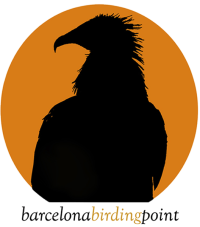Oman Birding Tour 2023 Trip Report
Dates: From January 15th to 25th, 2023
Number of participants: 4
Number of species seen: 203
All images in this trip report by tour leader Carles Oliver except by the especifically signed under a different name. All rights reserved.
Overview: 7th tour exploring Oman, a country that seems to hold countless surprises for any birdwatcher. In the crossroad between the Horn of Africa, the Western Palearctic and the Indian subcontinent, Oman shows a wonderful variety of winter and passage birds.
Some birds living in the coastal Dhofar hills, isolated by the sea but also by the massive sand desert that goes on for over 1000 miles well inside Saudi Arabia, have walked down an interesting speciation process, producing a number of endemics. At the same time, this area keeps being colonised by a number of African species, arriving from Yemen via the Aden Strait.
The weather during the tour was sunny and pleasant, always between 20ºC to 25ºC, out of a pair of days of stronger heat in the North of the country. In the South, we had a pair of windy days, but the wind didn’t destroy any of our birding options, and we kept enjoying an excellent birding in the Dhofar. On birds, it is interesting to note that this winter was poor in Harriers. Normally, one can expect double figures of Montagu’s or even Pallids during the tour, but this time we only got one of each! Numbers of Steppe Eagles were also low, and looks like the main overwintering spot for the bird has been definately re-establised inside Saudi Arabia.
In the same way, both numbers of Ducks and Shrikes were low, especially in the wetlands in the Dhofar, where Ducks can be very common depending on the year. Still, it was a good variety of ducks, and we got good views on both Turkestan & Isabelline Shrikes.
It is also worrying how rare the Arabian Grosbeak is getting during the last years. By the other hand, happy to see more Sandgrouses than ever before in the trip, with hundreds & hundreds of Chestnut-bellieds’s, and really good numbers of both Spotted & Crowned.
Day 1. After an afternoon flight we landed in Muscat International Airport. Once the whole group was assembled there, we moved to our accommodation placed only a few miles away from the airport.
The next morning we had a lovely breakfast and the group enjoyed the very first Common Mynas, Pale Crag Martins and House Crows of the trip. It was a sunny and rather warm morning in Muscat. Our first stop was devoted to explore Al Ansab lagoons. This small wetland has been closed due to maintenance works. Unfortunately one of the works have consisted in a new pavilion next to the main view point over the best lagoon for waders and ducks. Hopefully this will not affect the variety of birds that the area is normally holding.
In Al Ansab we got the very first views on some common birds in the north of the country including Grey Francolin, Indian Silverbill, Red-wattled Lapwing, Delicate Prinia, White-cheeked Bulbul and Purple Sunbird. Beside this, the lagoon offered a good array of waterfowl and waders including Black-winged Stilts, Greater Flamingo, Eurasian Teal, Common Snipe, Kentish Plover, Pintail, Whiskered Tern, Eurasian Moorhen, Crested Lark, Common Ringed Plover and the first of some Marsh Sandpipers. The grass around had 3 Citrine Wagtails, 1 White Wagtail, Desert Wheatear and 1 Western Yellow Wagtail.

From Al Ansab we went to Muscat River, where we were delighted by hundreds of waders. Dunlin, Little Stint and Greenshank were propably the commonest species but we also got good views on several Lesser Sand Plovers, Temminck’s Stints, Western Reef Egrets, 4 Black-tailed Godwits and 2 Marsh Sandpipers. The area was also nice for terns and in two different mixed flocks we counted 4 Common Terns + 2 Whiskered & 1 White-winged Black Tern. In the way to the beach we were surprised by tens of Chestnut-bellied Sandgrouses in the way to their drinking ponds.
Once in the beach, we noted 2 Greater Crested Terns along with several Slender-billed Gulls, Sandwich Terns and the beautiful Lesser Crested Terns. Here we also had the chance to see together Greater Sand & Lesser Sand Plovers, and it was useful to see how different the birds are in attitude, size and coloration. The small sand bar at the end of the river was also having several Heuglin’s & Steppe Gulls (both now considered Lesser Black-back Gull races) and the always gorgeous Sooty Gull.

From here we drove some miles away to look for the tiny population of Black-winged Kites living in Oman. It didn’t take long before we found two adults, probably the same birds that we found nesting in the area back in November 2022. We really enjoyed this wonderful bird, and the stop was also granted with the firsts Arabian Bee-eaters of the trip, and the first Indian Roller! Back to the coast, we scanned some flocks of gulls in search of Palla’s Gull, and again didn’t take long before we found 7 of them, with some individuals showing a wonderful black head. What a beast! A further scanning of the flock revealed not only some Black-headed Gulls but also 2 Caspian Gulls. Beyond, the beach was also having Eurasian Whimbrel and Oystercatcher.
After a nice lunch we explored some parks around Muscat. Unfortunately Al Qurm was closed, and the only accessible point was the coastal promenade so we turned around and went to Al Wustah, where we got good views on 2 Alexandrine Parakeets, Red-vented Bulbuls, White-spectacled Bulbuls and a flyover Bonelli’s Eagle. Late in the afternoon we went back to the Al Qurm promenade, where we enjoyed with the many Pallid Swifts passing by, and good (but distant) views on Pacific Golden Plover, Eurasian Curlew and Bar-tailed Godwit to end the day.
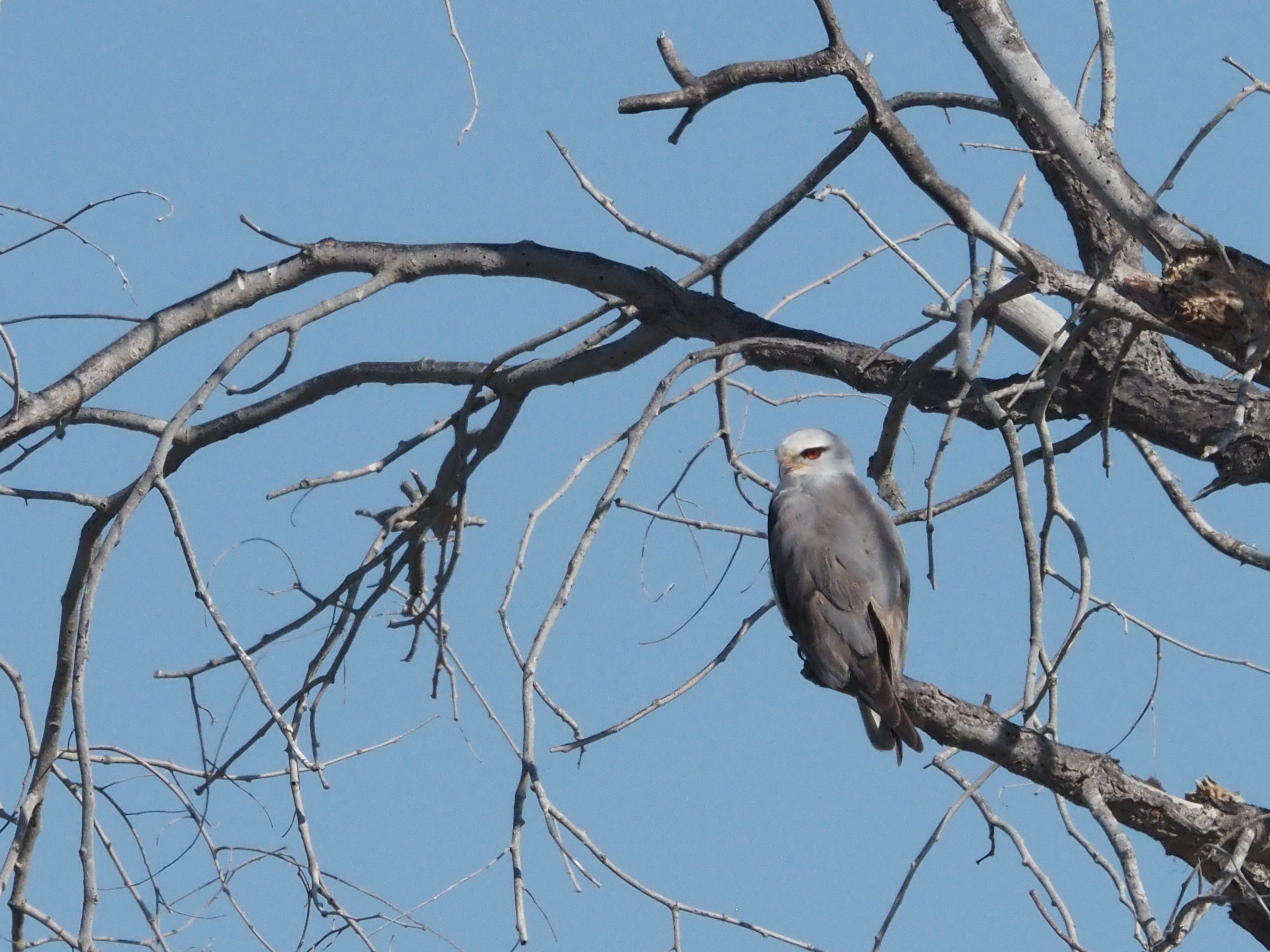




Day 2. Driving South from Muscat, we went to explore the very impressive mountain landscape of the Al Harar Mounts. These peaks, reaching 3000+ meters above the sea level, extend for over 700 kilometres in Northern Oman and neighbouring Emirates. We spent the morning in a small valley immediately below the mountains.
Here we chose to explore a small plain that leads into a gorge. We did a number of stops along the tracks of the plain. Persian Wheatear was the very first specialty to be noted. Up in a wire, we had good views on the first of many Levant Grey Shrike, now considered to be inside the Great Grey Shrike complex. A bit beyond, 2 Desert Larks were seen so we decided to go for a small walk, and we were glad to see that the Desert Larks were actually moving along with 2 Striolated Buntings. Suprisingly, these were the only Striolateds of the tour!
Further inside the plain, we had a stop in the dry river bed (called wadi in Arabic). Here we saw some Lesser Whitethroats, Black Redstart and several White-cheeked Bulbuls. An Eastern Orphean Warbler showed briefly while a pair of Indian Rollers were moving in the rocks nearby. When coming back to the vehicle we got the first Plain Leaf Warbler of the tour, and a wonderful Hume’s Wheatear was perched nearby, providing good photo opportunities.
There were certainly some good birds in the area so we decided to go further on in the valley, but the upper walk didn’t produce anything beyong Purple Sunbirds, Plain Leaf Warblers and Lesser Whitethroats. Back the vehicle, we were granted with a Lappet-faced Vulture appearing up in the sky! Always a wonderful bird to have!!





After lunch we drove into a massive gorge. This breathtaking corner of the world is one of the very few sites where Omani Owl is known to exist! It was early in the afternoon, and in our way in we had more Hume’s Wheatears and Indian Rollers. We also explored a small corner with oasis-like vegetation, and we got some Siberian Chiffchaffs calling and performing well and the first Grey Wagtail of the trip. In the distance, two Egyptian Vultures were noted in the top of the cliffs. We did wait until dusk, expecting to get something from one of the most unknown Owls in the planet, and our efforts were well granted. First with really distant houls, but even before dusk we got 1 Omani Owl calling up in the cliffs while flying and, later in the evening, a male was heard singing at least twice not really far away.
Of course, we did look for this closer bird for some time, but we absolutely failed to get anything else from such an enygmatic bird. After this we drove down the gorge and covered the short distance to our accommodation, where we had the chance to taste the local cuisine.

Day 3. Early morning start to transfer South to Salalah. Despite the big distance, we did once again very well. After breakfast, we drove South some miles and, taking advantage of the wonderful morning light, we had some birding. We didn’t have to walk far from our vehicle to get a Ménétrie’s Warbler feeding on the lush vegetation. We followed the bird tree to tree and got good views, but we were distracted by an Asian Desert Warbler that popped up from a bush only a pair of metres away from us. Indian Rollers were flying around, as there were the first Brown-necked Ravens of the trip. We kept walking the area and only 5 minutes later we found some Arabian Babblers calling in the distance. We had to move fast to catch them up but finally got good views on this specialist of desert scrublands and oasis-like places. When following the Babblers a wonderful party of Lichtenstein’s Sandgrouses flew off from the bare soil, leaving the group wanting more from them! When scouting the area in search of the Babblers we got 2 juvenile Tawny Pipits.


After such a great stop we had some driving, and our next real birding stop didn’t come until the afternoon. Our typical picnic place was this time empty of birds, and only 1 Isabelline Shrike & 1 Western Marsh Harrier were noted. But in the afternoon we had plenty of time to explore the famous desert farms in the way to Salalah. Here we had soon several Isabelline & Desert Wheatears along with a Northern Wheatear. We drove around looking for anything moving, and we were granted with a lovely male Pallid Harrier that the tour participant Otger was fast to catch up when flying low. We enjoyed this beuatiful bird of prey when he was really busy, flying into the green fields, where it was hunting boles, and moving later to the bare ground around to feed on them. The Pallid Harrier repeated the operation three times, and our group was delighted to see this uncommon behaviour once and over.
A further drive in the area brought us to an open fleld beyond the farms. This is a place that normally concentrates a large number of Sandgrouses, and this time was not different. Soon, we had tens of Chestnut-bellied Sandgrouses moving around, and we got good scope views on them and also in Spotted Sandgrouses, far more scarce here. A Marsh Harrier was patrolling the area, moving flocks of tens of Sandgrouses once and over as he was patrolling the area. Back to the farm, a large flock of Namaqua Doves provided good looks, with some obliging individuals. In the distance, a large flock of 80+ White Storks were circling up in the sky. We decided a do some walk in the area, and we were lucky to find 2 Pied Wheatears (one adult male, and one putative 1st winter female) feeding around along with a male Siberian Stonechat and the only one Greater Short-toed Lark of the trip!
From here we drove to our accommodation in Salalah, even if we had to go into a lay-by due to a Short-toed Snake Eagle that was standing by the road.
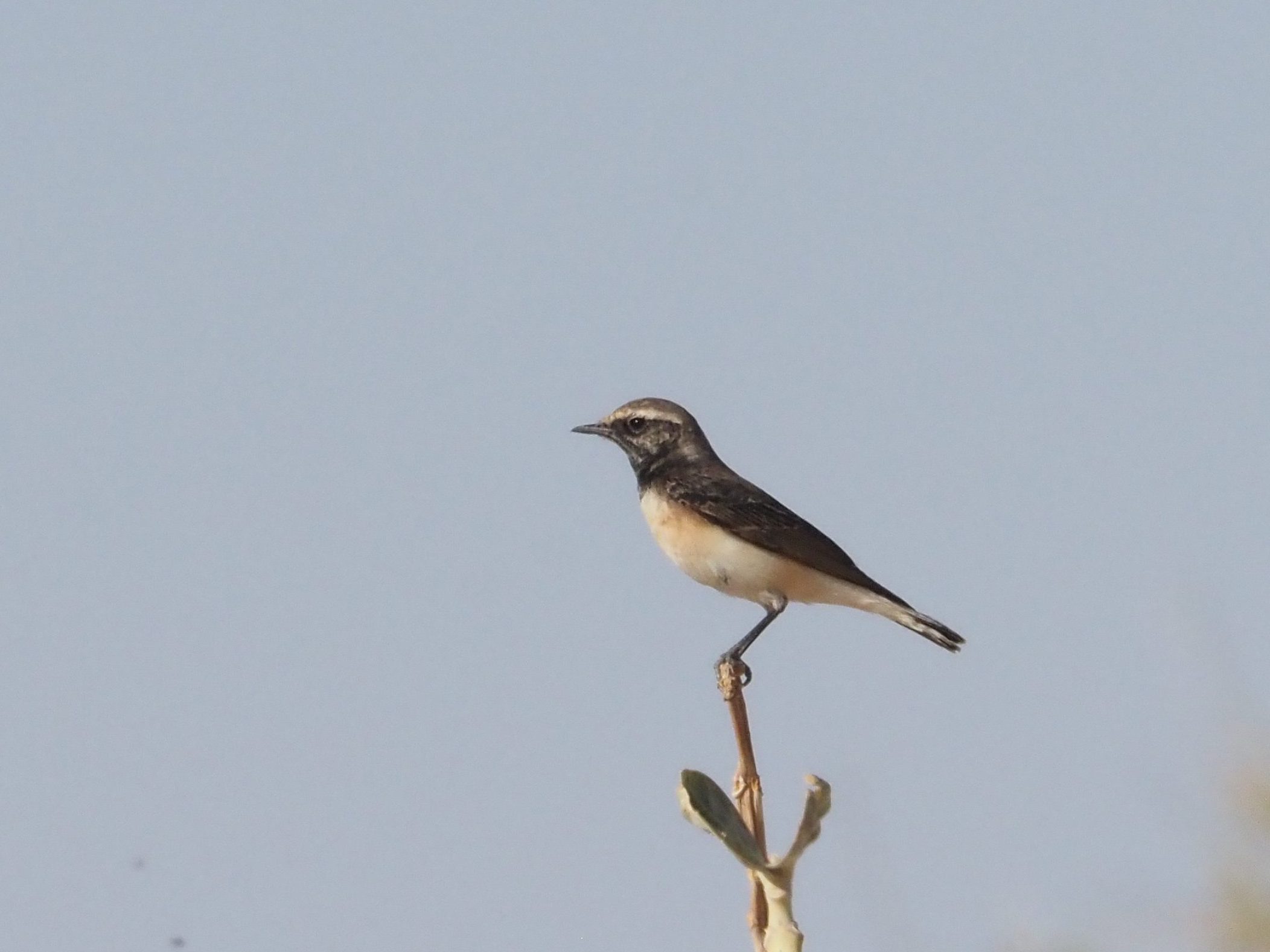



Day 4. Early morning start to explore the gorgeous South of Oman. Our first morning stop was devoted to go to Ayn Hamran, a plentiful birding location and one of the corner of wonders in the country. Here went fast through a number of common species in the South. African Silverbills, Rüppell’s Weavers, Cinnamon-breasted Buntings, Abyssinian White-eyes, Arabian Sunbirds, African Paradise Flycatchers and Tristam’s Starlings were fastly seen. A female Eurasian Sparrowhawk was quite a surprise, considering that they are really scarce so far South. A 1st year Imperial Eagle just passed over us but it did it in a wrong moment since we were tracking a secretive Arabian Warbler moving inside the canopy. We had excellent views on it, and while searching for this bird we just found the first Eastern Olivaceous Warbler of the morning. We then moved around the stream, and we were lucky to be fast in finding a gorgeous & obliging Arabian Grosbeak! This is one of the most scarce and difficult to find specialties in the area. The bird showed up for at least 15 minutes and we could register its song, take videos and really enjoy this wonderful bird. A second bird was noted to be calling around, but we never found it.
Close by, a Black-crowned Tchagra was feeding on the ground, and the group again had excellent views in the rather small and delicate Arabian race of this common species in Africa.
The morning was already wonderful, and it was only 9:00! We kept walking around. Delicate Prinias were also showy, but they could not compete with the Grosbeak! A Turkestan Shrike was seen at close range but in a difficult angle, and Clamorous Reed Warblers were heart, but never seen. A Red-breasted Flycatcher were heard around, and after some scanning we found the bird catching flies low in the fig trees. For our surprise, a second individual was also calling in the area.






From here we walked to the large fig trees. This is a place attacting several birds. There were plenty of Bulbuls, White-eyes, a 2nd Eastern Olivaceous Warbler and, after several scanning and some walk, we got to have close views on a beautiful male Bruce’s Green Pigeon. The blue of its eyes is something that many birdwatchers dream to see once in their lives! 3 more Bruce’s flew out the same tree while several African Paradise Flycatchers were hunting around.
After such a great start we came back to the coast, not without a stop in the desert-like plain to see the firsts Black-crowned Sparrow-Lark of the trip, and a lovely flock of 6 Chestnut-bellied Sandgrouses that the tour participant Magda saw when we were only a few feet away! In the coast was windy, but not that much. While enjoying our picnic in East Khawar, we had a view on the wildfowl around. Here we had the firsts Squacco & Indian Pond Herons of the trip, and some Citrine Wagtails were walking in the patches of tall grass around. 3 Eurasian Spoonbills were roosting in an island. Waders in the area included Black-tailed Godwit, Little Stint & Wood Sandpiper but also Marsh Sandpiper, Ruff and Temminck’s Stint. 1 Greater Spotted Eagle came to provide close views while taking an eye on the several Gulls and Terns roosting around. Here we had 4 Gull-billed Terns, Caspian Tern, Common Tern and 1 White-winged Black Tern. The gulls were all Steppe, Sooty, Heuglin’s and Slender-billeds, with only 4 Black-headed Gulls in the large flocks. In the water there were small parties of Garganeys and a single 1st winter Purple Heron was also seen moving in a close patch of vegetation.


The afternoon was still young so we drove South of Salalah to check a major wetland. In the way, Booted & Greater Spotted Eagles were noted. Once South of the city, it didn’t take long before we got the first Terek’s Sandpipers feeding in the mudflats along with Lesser Sand Plovers, Dunlins, Common Redshanks, Ruddy Turnstones and a couple of Bar-tailed Godwits. Out in the sea, Moises located the first Brown Bobby fishing close to the coast, followed by 3 more and 1 Masked Boobby. Socotra Cormorants were also present, fishing in small parties or alone, and allowed lovely scope views. Back in the shoreline, we found the African Openbill that has been in the area since the last fall. It spent a lot of time feeding in shallow water, surrounded by several Western Reef Egrets and Grey Herons. On the beach, 13 Ospreys and 2 Greater Spotted Eagles were counted sitting on rocks or directly on the bare sand. There were also some terns, including some Lesser & Greater Crested Terns.
Far South, we still had another stop in a wetland, this time a bit twitch the Lesser White-fronted Goose that had been there during the last weeks. Twitch is not something you can do really often in Oman, and it is always welcome! It didn’t take long to locate it feeding in the grassy patches at the river mouth along with some Pintails and Grey Plovers. Here we also got 8 Red-knobbed Coots, several Garganeys, a distant Indian Pond Heron, and close views on Pacific Golden Plover. A further exploration of the place produced 2 lovely Pheasant-tailed Jacanas, one of them showing a little bit of its majestic nesting plomage. A bit of sea watching nearby produced little of interest out of 10+ Brown Boobies and a small party of Socotra Cormorants feeding around.
While vesperting we drove some kilometers in a nearby wady. Even if the access was difficult, it was worth it when a Desert Owl started calling in the area despite the wind! It took us some time and some walk around, but we finally got breathtaking views on this amazing and poorly known owl!

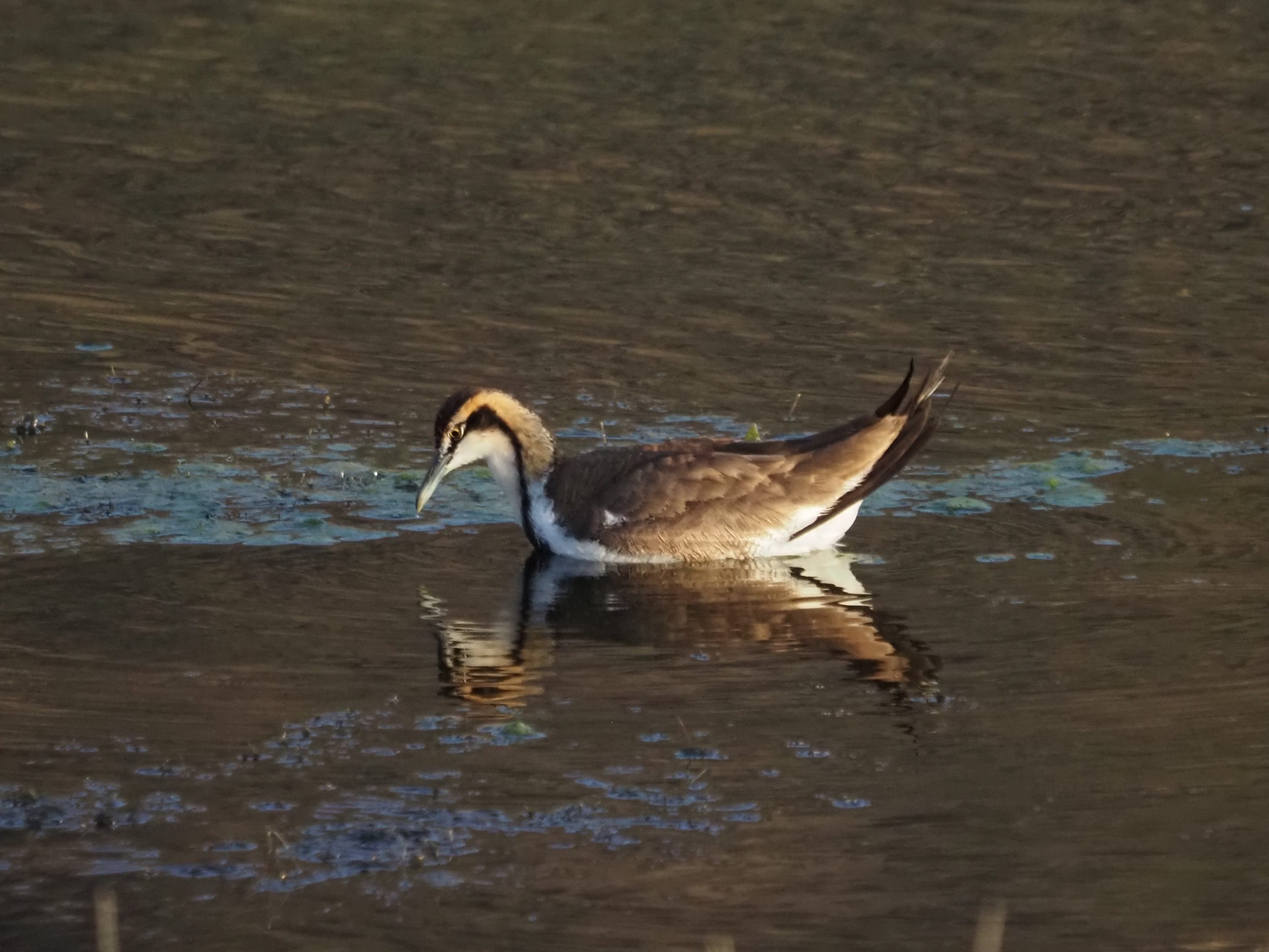
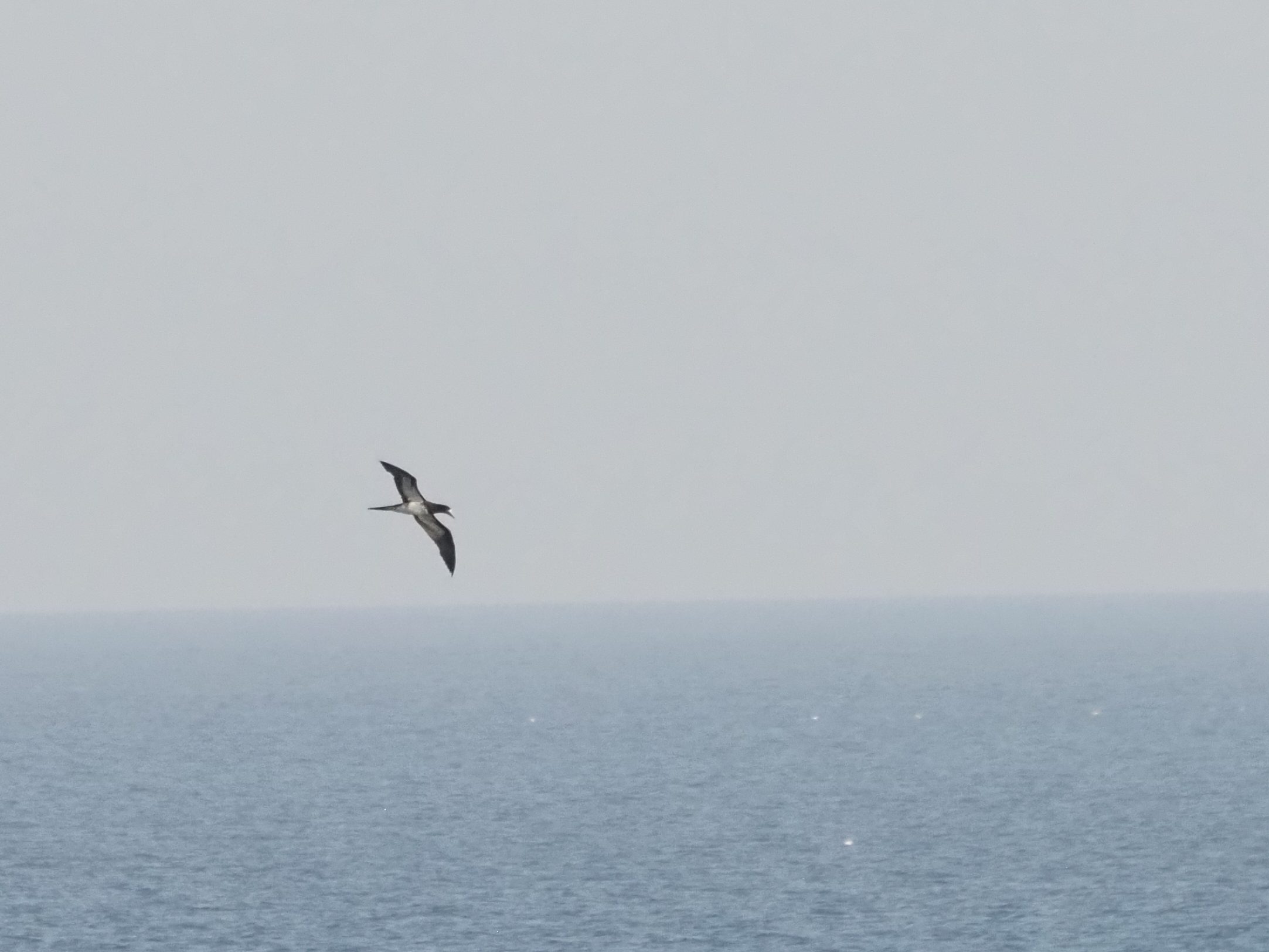

Day 5. After the amazing day before, we could not expect much more, but the day proved us wrong! An early morning stop in a reedbed produced little out of a Crested Honey Buzzard that Moises saw in our way back to the vehicles and that turned out to be the only one of the trip!
From the coast we decided to climb up to the Dhofar highlands, probably the most remarkable place for birds of prey in Oman. The area was filled up with Imperial Eagles, and we counted at least 12 of them! 1 Short-toed Snake Eagle was also seen before stopping forced by a running flock of the endemic Arabian Partridges in one side of the van. Arrived to the top of the mountain, we could enjoy the gorgeous cliffs that are facing the Arabian Sea. Here we enjoyed several Fan-tailed Ravens but also Pale Crag Martins, Common Kestrels, and a lovely pair of Arabian Wheatears. Verreaux’s Eagles proved harder, as it could not be in another way, and required some scanning from different places but finally we got a nice adult soaring around that, even if distant, were one of the highlights of the day!





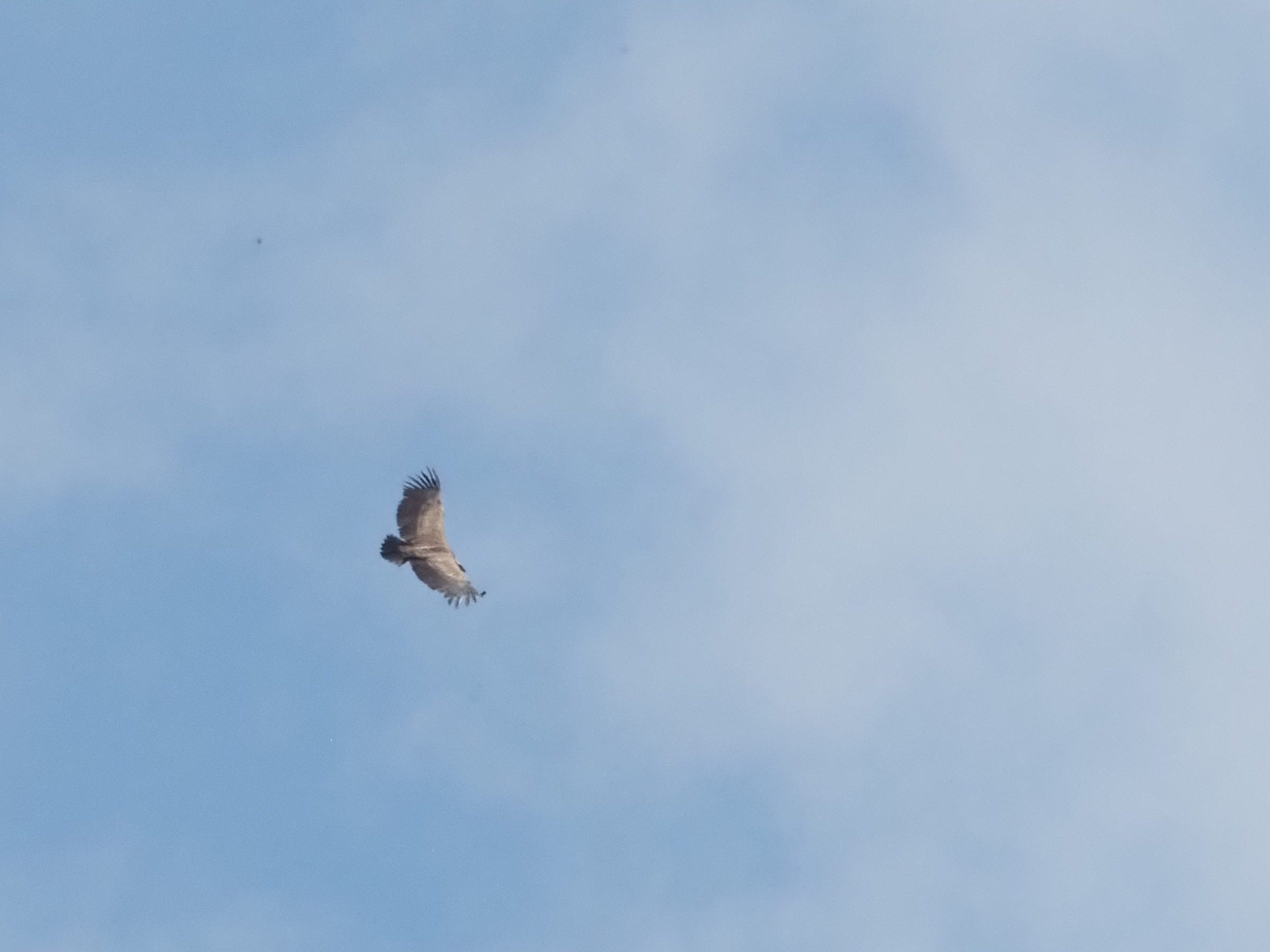
Some Rock Hyrax were feeding around, or hiding in the shades from the very powerful eagle that is always looking for them! The Hyraxes led us to two lovely Red-legged Buzzards that were patrolling the area. When leaving, a Long-billed Pipit was also seen moving in the rocky slopes. When moving in the Dhofar one should always have an eye in the sky, and once again proved correct, since we got both Lappet-faced Vulture & Eurasian Griffon moving around, both being scarce species in Southern Oman.
From here we drove to a proper place for picnic, and after enjoying our packed lunches we moved in search of some specialties. Both Palestine & Arabian Sunbirds were seen, although not at close range. Cinnamon-breasted Buntings were virtually everywhere along with African Silverbills, and we were lucky to picked up some Yemen Serins feeding on the ground along with them! At the beggining we saw only 3 but a further scanning produced at least 10, some of them providing really close looks. Here we also got 4 Tree Pipits. But the most surprinsing was to see a large flock of nearly 50 Bruce’s Green Pigeon leaving a tiny tree next to our group. We had been in this area, enjoying the Yemen Serins, for almost 15 minutes and nobody notice any single of the 50 Bruce’s…
Back to the vehicles we drove down to the coast, with a nice stop to enjoy the small population of Baobabs that subsists in the Dhofar. Here we got Arabian Warbler, Common Chiffchaff and a lovely African Paradise Flycatcher in shining nesting plumage and showing out its 2 long tail feathers. What a cracker!

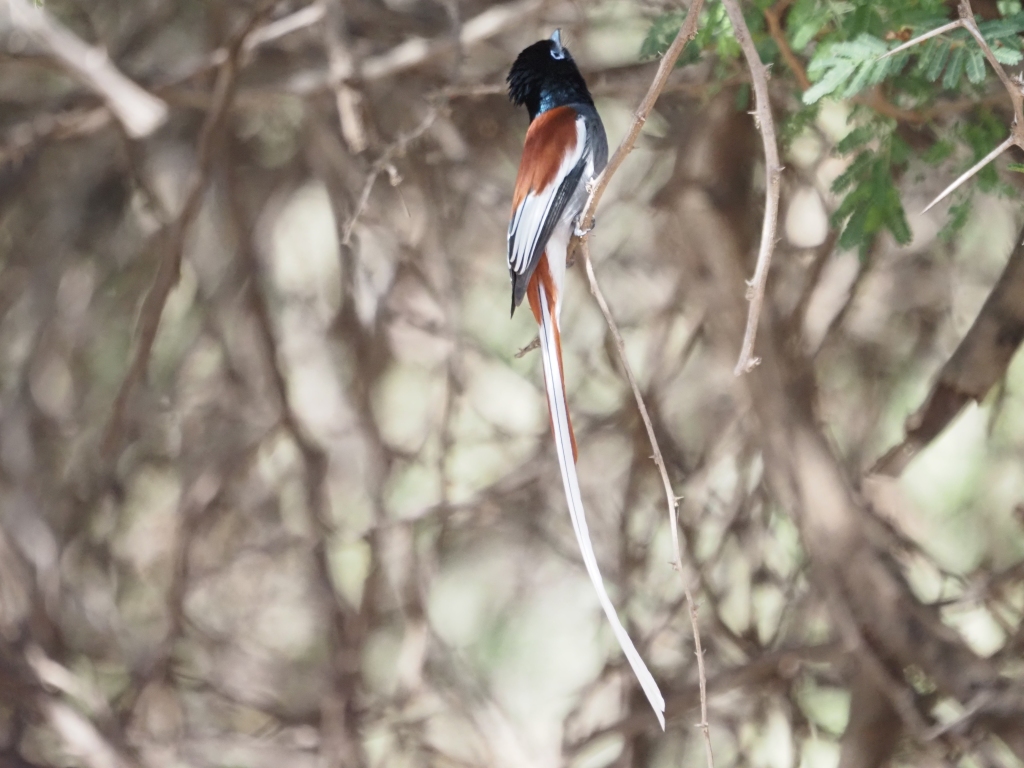



Once in the coast, we take a look into a pair of small corners but we got little, and probably the most interesting sights in both places was a “fulvescens” form of Greater Spotted Eagle, and a juvenile Bonelli’s being moved by an Osprey; definately not a common combination to see in the sky!
After a coffee stop, we did drove back to the hills to explore a wonderful corner: A stream that runs down the mountains and that is covered with lotus and floating vegetation, small reedbeds and mangrove-like bushes. What a great place! Here we did a walk along the stream, and soon we got the first Bluethroat of the trip; a female. Grey Herons, Wood Sandpipers and Little Egrets were around in good numbers, and a low scanning produced great views into 2 White-breasted Waterhens. This bird, often really elusive, was another of the highlights that day. Two Snipes flew off, and one of them really sounded like a Pin-tailed Snipe but unfortunately we could not relocate the bird, neither hear it again… Here we also got 4 Black-crowned Night Herons, Indian Pond & Squacco Herons, 3 Citrine Wagtails at close range in lovely afternoon light, a showy male Bluethroat and a calling Diederick Cuckoo that called 3 times from a large tree but never showed out.



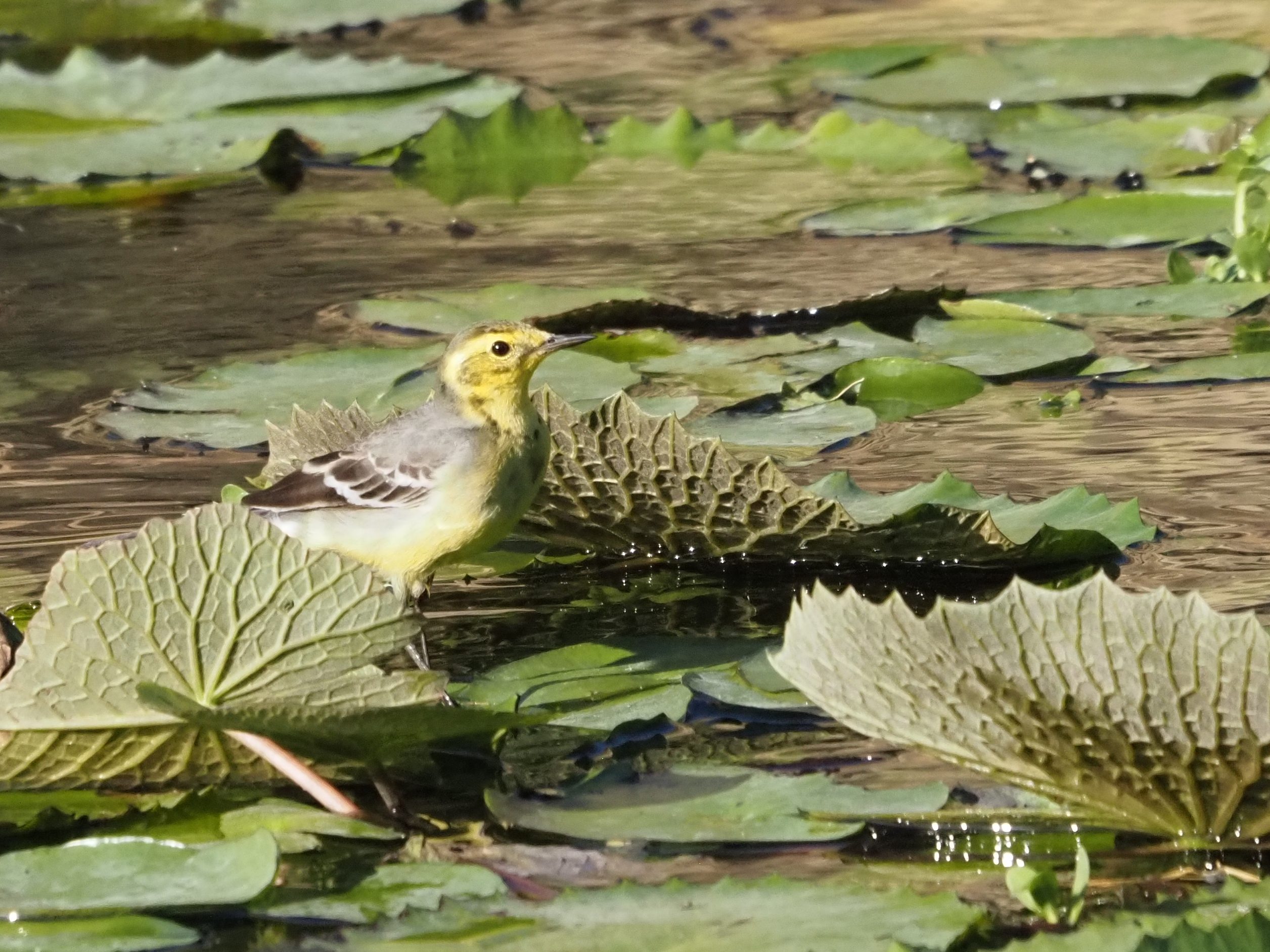
Day 6. Early morning start. This was the morning of our offshore. But before arriving to the harbour we had a stop in a small river mouth. Here, in previous tours we have counted tens of Rose-coloured Starlings living the reedbeds where do they roost, but this time we only got one along with several Common Mynas, some Western Marsh Harriers, Rüppell’s Weavers, 2 Yellow Wagtails and 1 adult Purple Heron. Once in the boat, we sailed out and fastly discovered that it was a quiet day, with very little movement in the sea. Despite this, we got excellent views on a number of Persian Shearwaters passing by the boat, some at close range. Small flocks of Red-necked Phalaropes were flying around, as there were some Masked Bookies, including some great views inmediatly above the boat and on the sea. Both Green & Loggerhead Turtles were seen a number of times, again quite close. But the clymax came when a Jouanin’s Petrel showed up in front of the boat! It was quite distant but still possible to see its typical shape and jizz and the long body. Unfortunately, not eveyone in the group catched up with the bird…
Back on the harbour, we got some close views on Striated Herons before living for our next stop. In the way back to Salalah, we scouted a large plain and our efforts were rewarded with a flock of 10 Cream-coloured Coursers that showed really well along with Isabelline Wheatears. After lunch, we revisited a pair of river mouths but we didn’t get that much different from our previous visits so we moved to check one of the typical places for Spotted Thick-knees to be roosting. They were there, and we enjoyed lovely views on 12 of them before moving for our last stop.
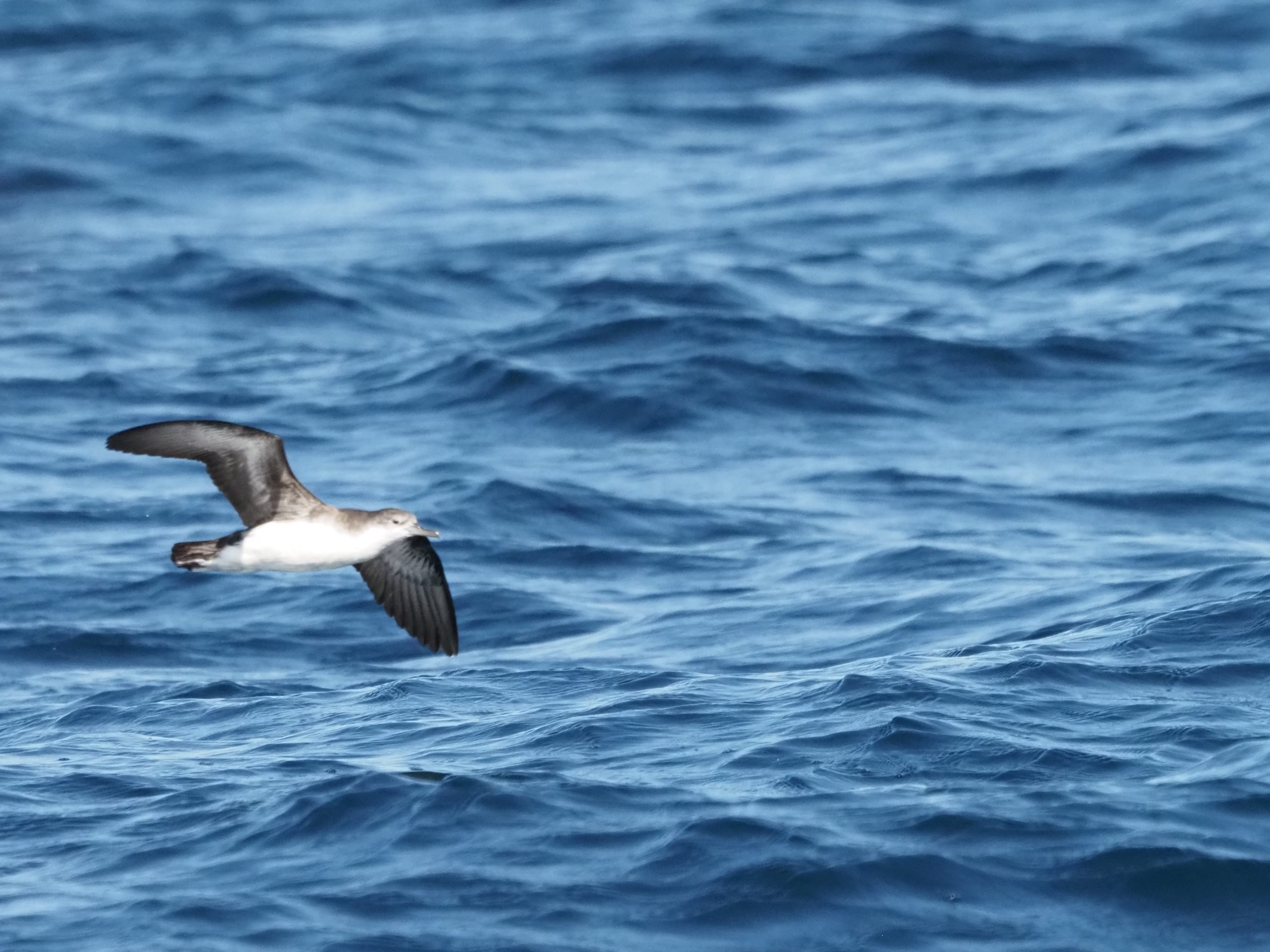




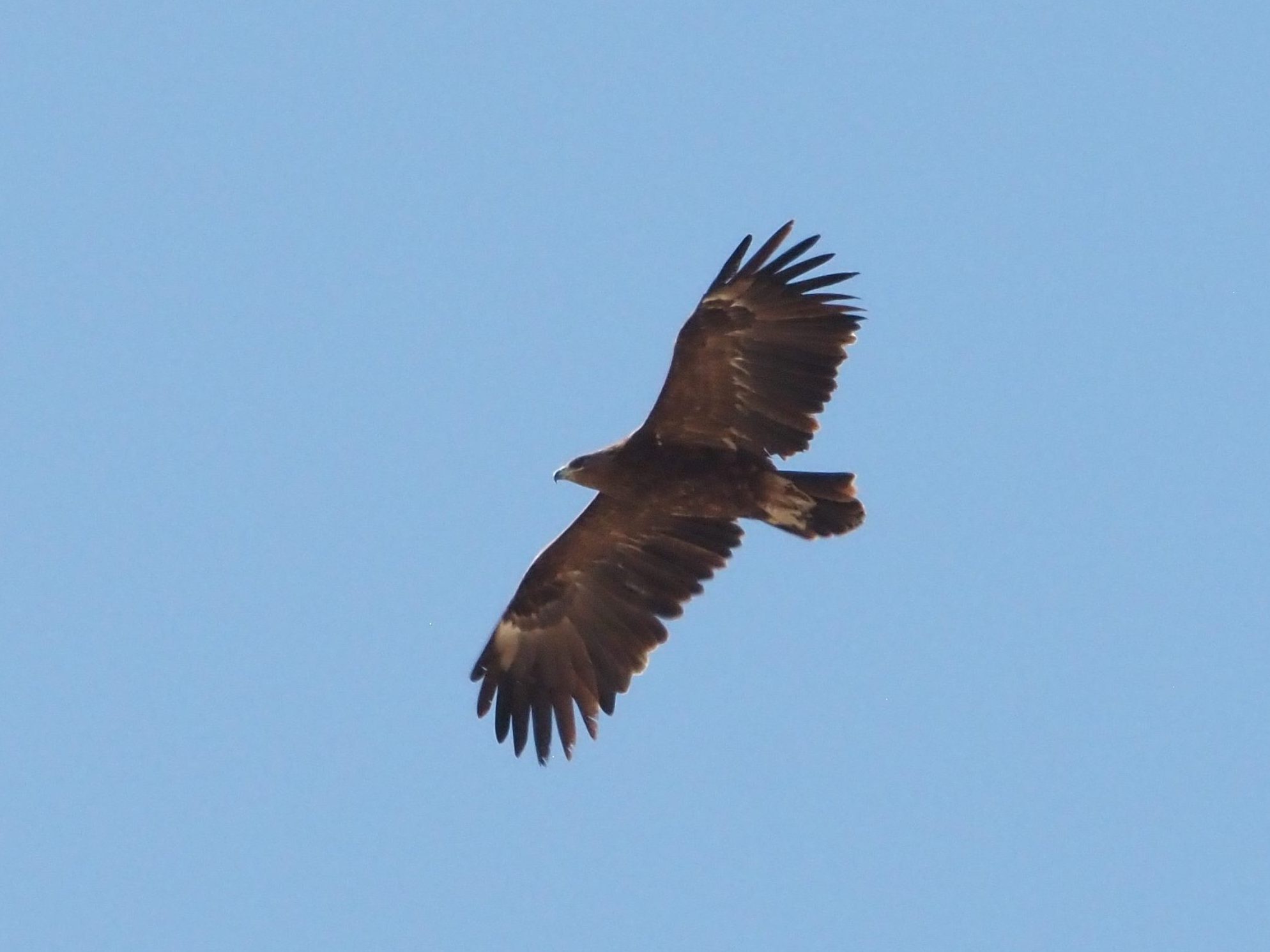

Back to the forested valleys, we explored a small stream, where we were surprised to find another Red-breasted Flycatcher having a bath along with Citrine & Grey Wagtails and 2 African Paradise Flycatchers. We enjoyed long views on the Flycatcher while searching for other goodies to appear, but everything we could find was a Hottetotta genus Scorpion. Here we waited until sunset, and with the very last lights of the day we were surprised to hear a Rufous-scrub Robin calling from the bush land. We scanned a bit but the last light of the day didn’t help and we never got a visual on this always wonderful ground flycatcher. Only a few minutes after the Robin was calling, we got the first call of an Arabian Eagle Owl coming from the opposite slope. During the next half an hour we struggled to find and approach the bird but every second of it was worth it when we finally got this endemic owl only a few meters away in a really unforgettable experience for all of us!



Day 7. The morning of this day was devoted to explore the oases at Mudday. This is the only reliable place for Grey Hypocolius in Oman, and there were only 2 birds reported at the end of December (in our trip on early December 2022 we were lucky to see 4 of them!). The Hypocolius proved to be as hard as ever, and it really took us an extra effort and patiente to finally connect with one of them, even if shortly! In the meanwhile we had time to enjoy at least 4 Nile Valley Sunbirds, 3 Blackstarts (they were suprisingly scarce this time in all the places we went!), several Sand Partridges including some birds drinking from a water hole, my first African Collared Dove in the place for some years, an Imperial Eagle, a lovely male Caucasian Bluethroat, the only Montagu’s Harrier of the trip, 1 Arabian Bee-eater and a lovely Hooded Wheatear!
A part from all of this was the experience to see 60+ Crowned Sandgrouses coming down to drink water in different flocks. Their calls, the very shy movements and behaviour and the very special beauty of the Sandgrouses on the ground at close range keep being for me one of the most wonderful birding experiences on Earth!
The very first glympse of the male Hypocolius was when it was feeding in a bush, only a few meters from us. The bird flew off before everyone in the group could have something of it, but it looked like not being far. We accurately scanned all the bushes and palm trees around, but we didn’t have a clue. From there we moved to check other corners around, getting our range of search bigger and bigger. Finally we dediced to come back to the exact place where we first saw the bird and scanned around for several minutes. Finally, right was I was about to give up, the bird appeared right in the same bush as it was the first time! Didn’t stay long there, though, and we still had to follow the bird up in the palm trees where it was hidden and, after a slowy scan, finally got excellent views on this amazing species, and eveyone had really good looks on it.






Really glad for this amazing view we went back to Salalah to have some lunch and rest. In the afternoon, we went to check the well known Raysut ponds. It was cloudy when we arrived, even about to rain! But of course, it didn’t rain at all. Here we counted 120 Abdim’s Storks, double figures of Whites‘, and 9 Red-wattled Lapwings (including one of the spur-winged x Red-wattled hybrids that live in the area). Other interesting species here included several Little Grebes, 1 Marsh Sandpiper, 1 Common Snipe (little numbers of Snipes this year) and Temminck’s Stints.


Back to the coast, we headed to West Kawhar, a place that very few people check (because normally is very little there). But we were lucky, not only because of the flocks of Pacific Golden Plovers at close range that provided great views but especially because we were lucky to find a Long-tailed Cormorant! Checking the dead trees around I was surprised to find this juvenile, small Cormorant with a long tail and a vivid red eye. The bird was extremely small (for a Cormorant) with a humbed head and whitish underparts. It may not be very exciting for those that have visited tropical Africa, but it happens to be a first for Oman! Very happy for our luck, we did some photos of the bird and pair attention to all main details with the scopes before leaving to our last wetland stop in a in the Dhofar.
Our last river mouth produced little out of a lovely flock of 5 Cotton Pygmy Goose. This is actually one of the best corners for ducks but it was almost empty…
Another point that is well worth checking in Salalah are the several farms around. You can choose any of them, for sure you will get excellent birds. Our farm was close to the beach, and just arriving to the place we found a tiny pond with some reeds. Here, a Clamorous Reed Warbler eluded us again, but we were happy to enjoy some Citrine Wagtails, Bluethroat and Green Sandpiper. Once in the fields, we soon had a large flock of Rosy Starlings flying around, that eventually stopped in the top of a thicket allowing really good scope views. Here we got another large flock (200+) of Pacific Golden Plovers, one of them showing what it look to be a complete summer plomage. Another surprise was to find 2 Common Cranes here, and we enjoyed them while some Red-throated Pipits and Yellow Wagtails were flying above us. The visit ended with brief views on a Siberian Stonechat.
To end the day, we chose another visit to wooded valley, and here we got really nice views on 1 Arabian Scops Owl. At least 3 more were heard singing around before going back to our accommodation for a very deserved rest.


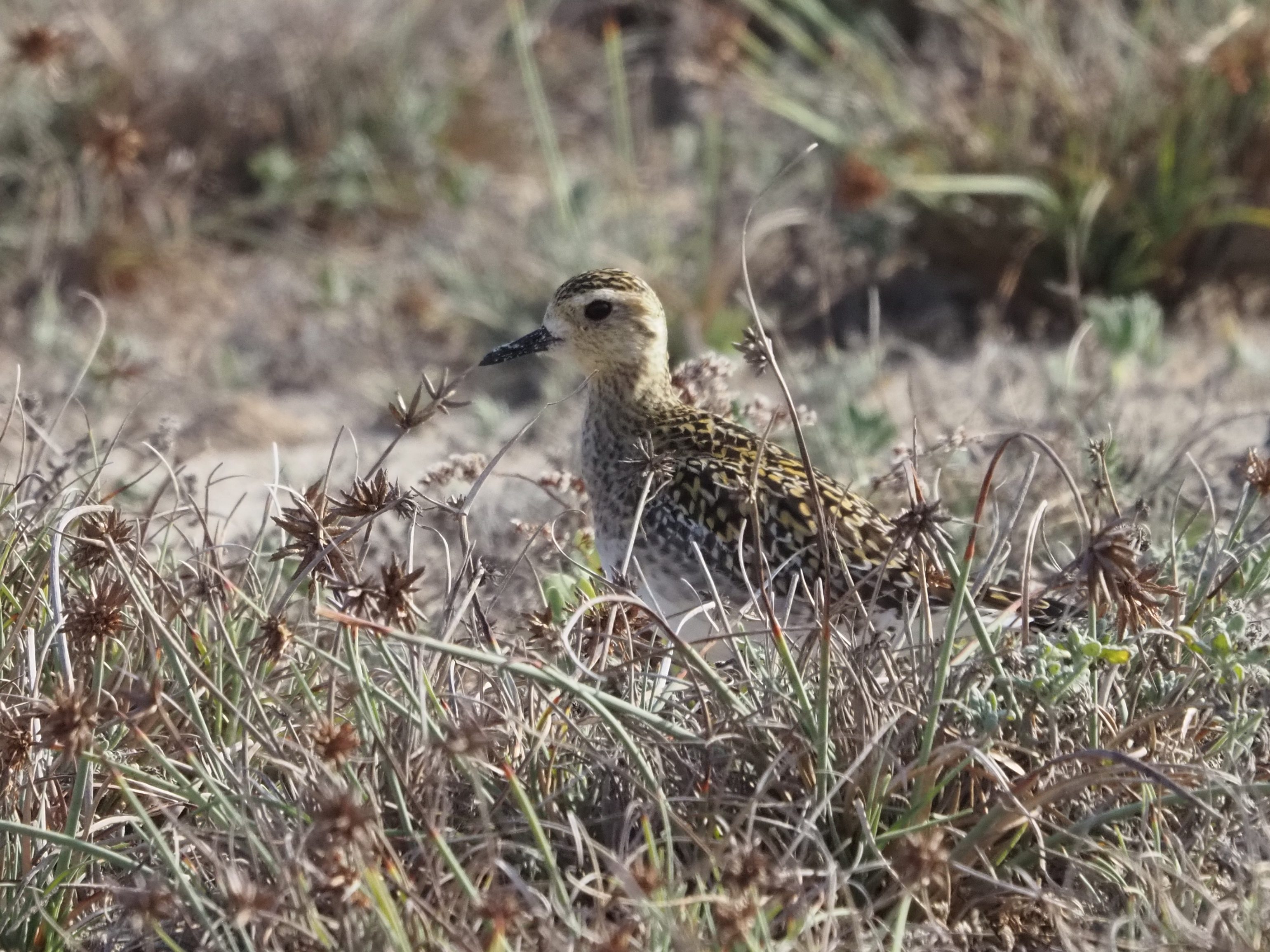



Day 8. After breakfast we went back to explore farms. This time we had a first stop in a different one. Surprisingly we didn’t have any Harrier at all, but the place was literally fullfilled with Yellow Wagtails. Hundreds, thousands of them were moving around, following the tractors but, in fact, everywhere. Both feldegg & beema races were noted, with some thunbergi probably also there. Large flocks of Ruffs were in the move along with Glossy Ibises. On the ground, we got some lovely views on Red-throated Pipits including some salmon-breasted ones. But the most celebrated bird here was an Oriental Skylark that landed only a few meters away from us, and after some accurate scanning of the soil, showed well for some seconds before leaving.
The visit had been so great so we decided to do a fast stop to the farm where we had been birdwatcher the previous afternoon. There, we got lucky to find the Rose-coloured Starlings bathing in a small pond only a few meters away from us. Besides, 4 Little Ringed Plovers were also seen at close range. Back to the proper farms, we listened some Red-throated Pipits before a wonderful Richard’s Pipit appeared and stop only some 20 meters away from us. All the group enjoyed wonderful views on the bird both with the scope and with the bins before the bird moved to a taller grass corner.



From here we drove back to the desert. In this day we faced a transfer North for an overnight in Duqm, but we still didn’t give up of birding! After a pair of hours of car we stopped in a new farm. Just driving the road we got some flocks of Sandgrouses flying in the distance so we decided to explore the fields around. Here we were granted with 12 Cream-coloured Coursers, Isabelline Shrike, tens of Chesnut-bellied Sandgrouses, Black-crowned Sparrow-Larks and some Levant Grey Shrikes.
Back to desert, we kept driving North. To cross the desert is always wonderful and not absent of birding opportunities, and after some miles we got a pair of Greater Hoopoe Larks nicely moving in the bare soil. We got even lucky to listen its beautiful song, a long whistle that is often (like this time) joined by a short displaying flight. Really happy with these great views we went back to hit the road until the afternoon, when we did a last stop to enjoy the lovely light. There, not far from Duqm, we did a stroll around and we got really good views on 1 Asian Desert Warbler doing its way while following a male Desert Wheatear.
Soon after that we arrived to our nice accommodation in Duqm, where we enjoyed a well deserved rest before dinner.


Day 9. After breakfast, our day started by doing a short walk to the small garden of our accommodation. Here we found a Red-breasted Flycatcher during our last visit in early December and, suprinsingly, the bird was still moving in this tiny garden! Purple Sunbirds were also seen here. A short drive led us then to a small canal with a rich reedbed where we saw 3 Wood Sandpipers, some Eurasian Teals, a Green Sandpiper and the very firsts Mallards of the tour (a flock of 6).
From here we transfered North to the massive mudflats around Masirah Island. There is an estimation of 1 million waders overwintering here, and once you visit the area you may consider this estimation as conservative. Soon, we had some Kentish & Lesser Sand Plovers along with Dunlins, Curlew Sandpipers and Little Stints. We took some time to check some of the several flocks of Gulls around, but nothing different appeared despite the good photo opportunities.


Back to the mudflats we enjoyed with the arrival of thousands of waders to the feeding areas. Bar-tailed Godwits were really common, as there were Dunlins, Common Redshanks, Grey Plovers, Eurasian Curlews and Greater Sand Plovers, some of them showing already a promising summer coloration. The scan around produced the very first Broad-billed Sandpiper, that was celebrated in the group. At the same time, a Clamorous Reed Warbler showed out from the mangrove vegetation, and we all finally got some views on a species that had been eluding us for all the tour long. A small flock of 7 Spotted Sandpipers were also seen, and when we were checking this gorgeous waders the very first Crab Plover appeared right in front of us! Always a gorgeous bird, almost the size of a Little Egret, the Crab Plovers move often here in pairs that consist in an adult with a juvenile that constantly beg for food. Little by little, more and more Crab Plovers were arriving, and we were able to see some birds catching and feeding on crabs. In only 30 minutes we counted up to 70 birds. Other species also appeared here including Caspian & Gull-billed Terns. We hoped for some Little/Saunder’s Terns to appear, but we didn’t have luck on this.
Our final stop of the day was to check a different corner of this massive mudflats. Here we had barely the same birds than in our previous stop out of Crab Plovers. Still, we got at least four more Broad-billed Sandpipers, 1 Striated Heron in the mangroves and some Eurasian Whimbrels for our day list.
From here we transfered to our accommodation, arriving there a bit after sunset.



Day 10. Last morning in Oman. We drove the distance between our accommodation from Muscat with some stops in the way to take a look on some raptors. First a lienatus-like Black Kite, but later 3 Lappet-faced Vultures joined by 1 Imperial Eagle and some Egyptian Vultures were a good entertaiment for the very last miles before arriving to Muscat. Our last serious birding stop was devoted to explore the famous Al Mouj Golf Courser in search of the White-tailed Lapwing that had been seen during the last weeks. We were not lucky on the lapwing, but we still had some nice addings to our list including Ferruginous Duck (1 male), Eurasian Wigeon and 3 Greater White-fronted Geese. Along with them, we also had several Red-wattled Lapwings, Indian Rollers, Ruffs, Western Yellow Wagtails and Little Grebes in the ponds.
From here we just drove the very short distance to the airport, and got ready for our flights back to Europe!
And this is how we ended our 7th tour to Oman. Already looking forward our trip in 2024 to have more incredible sights in this awesome birding country!


Species of birds seen during the tour:
- Arabian Partridge (Alectoris melanocephala)
- Sand Partridge (Ammoperdix heyi)
- Grey Francolin (Ortygornis pondicerianus)
- Greater White-fronted Goose (Anser albifrons)
- Lesser White-fronted Goose (Anser erythropus)
- Cotton Pygmy Goose (Nettapus coromandelianus)
- Mallard (Anas platyrhynchus)
- Gadwall (Anas strepera)
- Eurasian Wigeon (Anas penelope)
- Pintail (Anas acuta)
- Eurasian Teal (Anas crecca)
- Garganey (Spatula querquedula)
- Northern Shoveler (Spatula clypeata)
- Ferruginous Duck (Aythya nyroca)
- Pallid Swift (Apus pallidus)
- Chestnut-bellied Sandgrouse (Pterocles exustus)
- Crowned Sandgrouse (Pterocles coronatus)
- Spotted Sandgrouse (Pterocles senegallus)
- Lichtenstein’s Sandgrouse (Pterocles lichtensteinii)
- Feral Pigeon (Columba livia sp.)
- Eurasian Collared Dove (Streptopelia decaocto)
- African Collared Dove (Streptopelia roseogrisea)
- Laughing Dove (Streptopelia senegalensis)
- Namaqua Dove (Oenas capensis)
- Bruce’s Green Pigeon (Treron waalia)
- Common Crane (Grus grus)
- White-breasted Waterhen (Amaurornis phoenicurus)
- Eurasian Moorhen (Gallinula chloropus)
- Eurasian Coot (Fulica atra)
- Red-knobbed Coot (Fulica cristata)
- Little Grebe (Tachybaptus ruficollius)
- Greater Flamingo (Phoenicopterus roseus)
- Spotted Thick-knee (Burhinus capensis)
- Eurasian Oystercatcher (Haematopus ostralegus)
- Crab Plover (Dromas ardeola)
- Black-winged Stilt (Himantopus himantopus)
- Pheasant-tailed Jacana (Hydrophaisanus chirurgus)
- Red-wattled Lapwing (Vanellus indicus)
- Pacific Golden Plover (Pluvialis fulva)
- Grey Plover (Pluvialis squatarola)
- Little Ringed Plover (Charadrius dubius)
- Common Ringed Plover (Charadrius hiaticula)
- Kentish Plover (Charadrius alexandrinus)
- Lesser Sand Plover (Charadrius mongolus)
- Greater Sand Plover (Charadrius leschenaultii)
- Common Snipe (Gallinago gallinago)
- Black-tailed Godwit (Limosa limosa)
- Bar-tailed Godwit (Limosa lapponica)
- Eurasian Whimbrel (Numenius phaeopus)
- Eurasian Curlew (Numenius arquata)
- Spotted Redshank (Tringa erythropus)
- Common Redshank (Tringa totanus)
- Marsh Sandpiper (Tringa stagnatilis)
- Common Greenshank (Tringa nebularia)
- Green Sandpiper (Tringa ochropus)
- Wood Sandpiper (Tringa glareola)
- Terek Sandpiper (Xenus cinereus)
- Common Sandpiper (Actitis hypoleucos)
- Ruddy Turstone (Arenaria interpres)
- Little Stint (Calidris minuta)
- Temminck’s Stint (Calidris temminckii)
- Dunlin (Calidris alpina)
- Curlew Sandpiper (Calidris ferruginea)
- Broad-billed Sandpiper (Limicola falcinellus)
- Ruff (Philomachus pugnax)
- Red-necked Phalarope (Phalaropus lobatus)
- Slender-billed Gull (Chroicocephalus genei)
- Black-headed Gull (Chroicocephalus ridibundus)
- Heuglin’s Gull (Larus fuscus heuglini) / Steppe Gull (Larus fuscus barabensis)
- Caspian Gull (Larus cachinnans)
- Palla’s Gull (Larus ichthyaetus)
- Sooty Gull (Larus hemprichii)
- Caspian Tern (Hydroprogne caspia)
- Greater Crested Tern (Thalasseus bergii)
- Lesser Crested Tern (Thalasseus bengalensis)
- Sandwich Tern (Thalasseus sandvicensis)
- Common Tern (Sterna hirundo)
- Gull-billed Tern (Gelochelidon nilotica)
- Little Tern (Sternula albifrons)
- Whiskered Tern (Chlidonias hybridus)
- White-winged Black Tern (Chlidonias leucopterus)
- Persian Shearwater (Puffinus persicus)
- Jouanin’s Petrel (Bulweria fallax)
- Abdim’s Stork (Ciconia abdimii)
- White Stork (Ciconia ciconia)
- African Openbill (Anastomus lamelligerus)
- Masked Booby (Sula dactylatra)
- Brown Bobby (Sula leucogaster)
- Great Cormorant (Phalacrocorax carbo)
- Socotra Cormorant (Phalacrocorax nigrogularis)
- Long-tailed Cormorant (Microcarbo africanus)
- Glossy Ibis (Plegadis falcinellus)
- Eurasian Spoonbill (Platalea leucorodia)
- Striated Heron (Butorides striata)
- Squacco Heron (Ardeola ralloides)
- Indian Pond Heron (Ardeola grayii)
- Western Cattle Egret (Bubulcus ibis)
- Black-crowned Night Heron (Nycticorax nycticorax)
- Purple Heron (Ardea purpurea)
- Grey Heron (Ardea cinerea)
- Western Reed Egret (Egretta gularis)
- Little Egret (Egretta garzetta)
- Great White Egret (Casmerodius albus)
- Egyptian Vulture (Neophron percnopterus)
- Griffon Vulture (Gyps fulvus)
- Lappet-faced Vulture (Torgos trachelietos)
- Osprey (Pandion haliaetos)
- Crested Honey Buzzard (Pernis ptilorhynchus)
- Black Kite (Milvus migrans)
- Greater Spotted Eagle (Clanga clanga)
- Steppe Eagle (Aquila nipalensis)
- Eastern Imperial Eagle (Aquila heliaca)
- Verreaux’s Eagle (Aquila verreauxii)
- Bonelli’s Eagle (Aquila fasciata)
- Booted Eagle (Hieraaetus pennatus)
- Short-toed Snake Eagle (Circaetus gallicus)
- Eurasian Sparrowhawk (Accipiter nisus)
- Black-winged Kite (Elanus caeruleus)
- Western Marsh Harrier (Circus aeruginosus)
- Pallid Harrier (Circus macrourus)
- Montagu’s Harrier (Circus pygargus)
- Long-legged Buzzard (Buteo rufius)
- Arabian Scops Owl (Otus pamelae)
- Desert Owl (Strix hadorami)
- Omani Owl (Strix butleri)
- Arabian Eagle Owl (Bubo milesis)
- Eurasian Hoopoe (Upupa epops)
- Indian Roller (Coracias benghalensis)
- Arabian Bee-eater (Merops cyanophrys)
- Common Kestrel (Falco tinnunculus)
- Alexandrine Parakeet (Psittacula eupatria)
- Ring-necked Parakeet (Psittacula krameri)
- Black-crowned Tchagra (Tchagra senegallus)
- Isabelline Shrike (Lanius isabellinus)
- Turkestan Shrike (Lanius phoenicuroides)
- Levant Grey Shrike (Lanius excubitor aucheri)
- Arabian Babbler (Turdoides squamiceps)
- African Paradise Flycatcher (Tersiphone viridis)
- Grey Hypocolius (Hypocolius ampelinus)
- White-eared Bulbul (Pycnonotus leucotis)
- Red-vented Bulbul (Pycnonotus cafer)
- White-spectacled Bulbul (Pycnonotus xanthopygos)
- House Crow (Corvus splendens)
- Brown-necked Raven (Corvus ruficollis)
- Fan-tailed Raven (Corvus rhidipurus)
- Greater Hoopoe-Lark (Alaemon alaudipes)
- Desert Lark (Ammomanes deserti)
- Greater Short-toed Lark (Calandrela brachydactyla)
- Black-crowned Sparrow-Lark (Eremopterix nigriceps)
- Oriental Skylark (Alauda gulgula)
- Crested Lark (Galerida cristata)
- Pale Crag Marting (Ptyonoprogne obsoleta)
- Barn Swallow (Hirundo rustica)
- Graceful Prinia (Prinia gracilis)
- Delicate Prinia (Prinia lepida)
- Common Chiffchaff (Phylloscopus collybita)
- Siberian Chiffchaff (Phylloscopus trists)
- Plain Leaf Warbler (Phylloscopus neglectus)
- Clamorous Reed Warbler (Acrocephalus stentoreus)
- Asian Desert Warbler (Curruca nana)
- Lesser Whitethroat (Curruca curruca)
- Eastern Orphean Warbler (Curruca crassirostris)
- Arabian Warbler (Curruca leucomelaena)
- Ménétries’ Warbler (Curruca mystacea)
- Eastern Olivaceous Warbler (Iduna pallida)
- Abyssinian White-eye (Zosterops abyssinicus)
- Common Myna (Acridothere tristis)
- Rose-coloured Starling (Pastor roseus)
- Tristam’s Starling (Onychognathus tristamii)
- Bluethroat (Luscinia svecica)
- Black Redstart (Phoenicurus ochruros)
- Siberian Stonechat (Saxicola maurus)
- Isabelline Wheatear (Oenanthe isabellina)
- Northern Wheatear (Oenanthe oenanthe)
- Desert Wheatear (Oenanthe deserti)
- Pied Wheatear (Oenanthe pleschanka)
- Arabian Wheatear (Oenanthe lugentoides)
- Hume’s Wheatear (Oenanthe albonigra)
- Hooded Wheatear (Oenanthe monacha)
- Persian Wheatear (Oenanthe chrysopygia)
- Blackstart (Oenanthe melanura)
- Red-breasted Flycatcher (Ficedula parva)
- Nile Valley Sunbird (Hedydipna metallica)
- Palestine Sunbird (Cinnyris osea)
- Arabian Sunbird (Cinnyris hellmayrii)
- Purple Sunbird (Cinnyris asiaticus)
- House Sparrow (Passer domesticus)
- Rüppell’s Weaver (Ploceus galbula)
- African Silverbill (Euodice cantans)
- Indian Silverbill (Euodice malabarica)
- Citrine Wagtail (Motacilla citreola)
- White Wagtail (Motacilla alba)
- Grey Wagtail (Motacilla cinerea)
- Western Yellow Wagtail (Motacilla flava)
- Richard’s Pipit (Anthus richardi)
- Tawny Pipit (Anthus campestris)
- Long-billed Pipit (Anthus similis)
- Tree Pipit (Anthus trivialis)
- Red-throated Pipit (Anthus cervinus)
- Yemen Serin (Cithraga menachensis)
- Arabian Grosbeak (Rhynchostruthus percivali)
- Striolated Bunting (Emberiza striolata)
- Cinnamon-breasted Bunting (Emberiza tahapisi)


